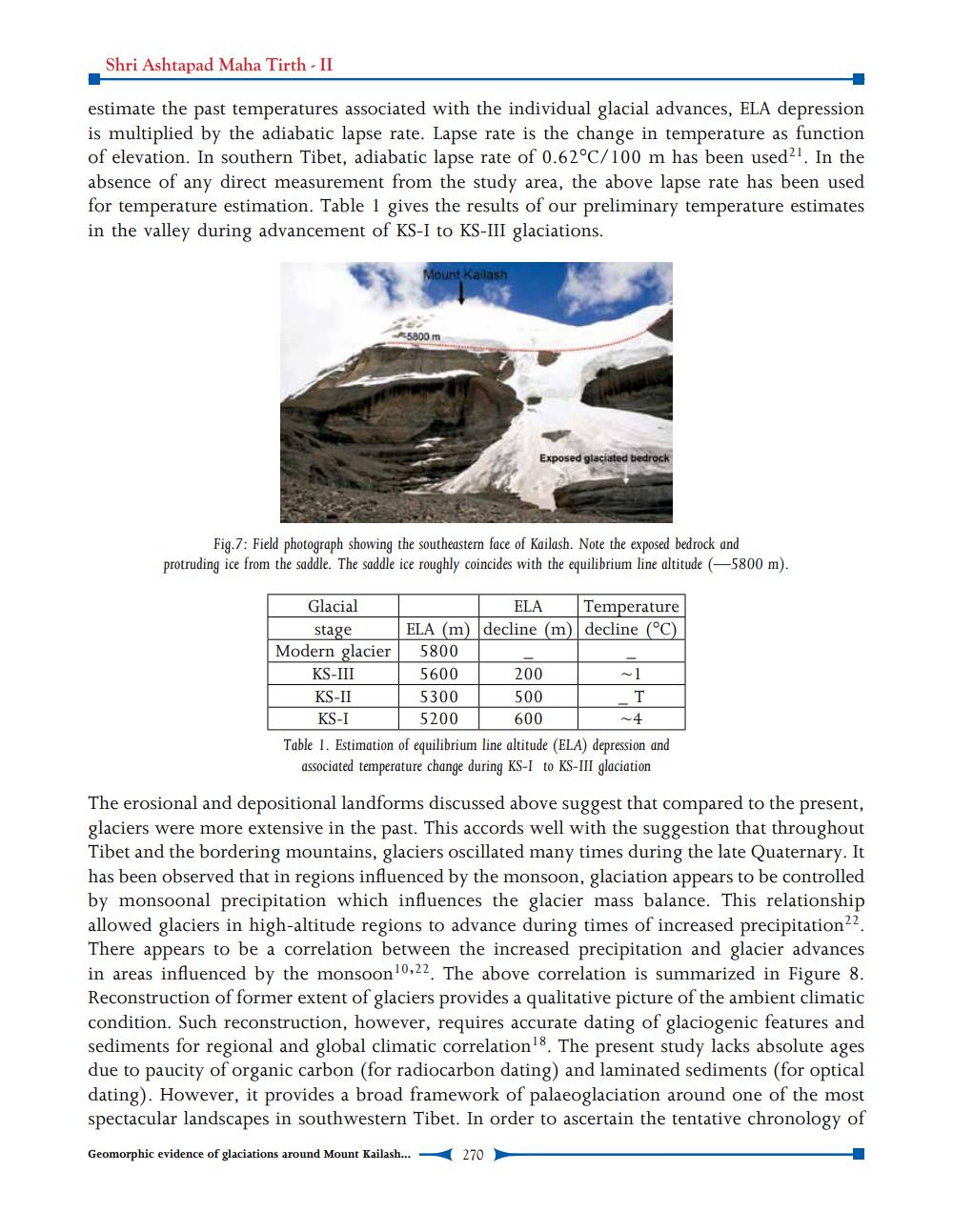________________
Shri Ashtapad Maha Tirth - II
estimate the past temperatures associated with the individual glacial advances, ELA depression is multiplied by the adiabatic lapse rate. Lapse rate is the change in temperature as function of elevation. In southern Tibet, adiabatic lapse rate of 0.62°C/100 m has been used. In the absence of any direct measurement from the study area, the above lapse rate has been used for temperature estimation. Table 1 gives the results of our preliminary temperature estimates in the valley during advancement of KS-I to KS-III glaciations.
Mount Kailash
5800 m
Exposed glaciated tiedrock
Fig. 7: Field photograph showing the southeastern face of Kailash. Note the exposed bedrock and protruding ice from the saddle. The saddle ice roughly coincides with the equilibrium line altitude 5800 m).
Glacial I
E LA Temperature stage ELA (m) decline (m) decline (°C) Modern glacier 5800 KS-III 5600 200
1 KS-II 5300 500
T KS-I 5200 600
4 Table 1. Estimation of equilibrium line altitude (ELA) depression and
associated temperature change during KS-I to KS-III glaciation
The erosional and depositional landforms discussed above suggest that compared to the present, glaciers were more extensive in the past. This accords well with the suggestion that throughout Tibet and the bordering mountains, glaciers oscillated many times during the late Quaternary. It has been observed that in regions influenced by the monsoon, glaciation appears to be controlled by monsoonal precipitation which influences the glacier mass balance. This relationship allowed glaciers in high-altitude regions to advance during times of increased precipitation 2 There appears to be a correlation between the increased precipitation and glacier advances in areas influenced by the monsoon 10,22. The above correlation is summarized in Figure 8. Reconstruction of former extent of glaciers provides a qualitative picture of the ambient climatic condition. Such reconstruction, however, requires accurate dating of glaciogenic features and sediments for regional and global climatic correlation 18. The present study lacks absolute ages due to paucity of organic carbon (for radiocarbon dating) and laminated sediments (for optical dating). However, it provides a broad framework of palaeoglaciation around one of the most spectacular landscapes in southwestern Tibet. In order to ascertain the tentative chronology of
Geomorphic evidence of glaciations around Mount Kailash...
270




